
Planetary Picture of the Day
Weeks of June 24, 2024 and July 01, 2024
Eight days of planetary images! From our own Moon to moons of Saturn, to Mars and places here on Earth, we have a wide range of places to learn about and understand.
Monday, 24 June 2024
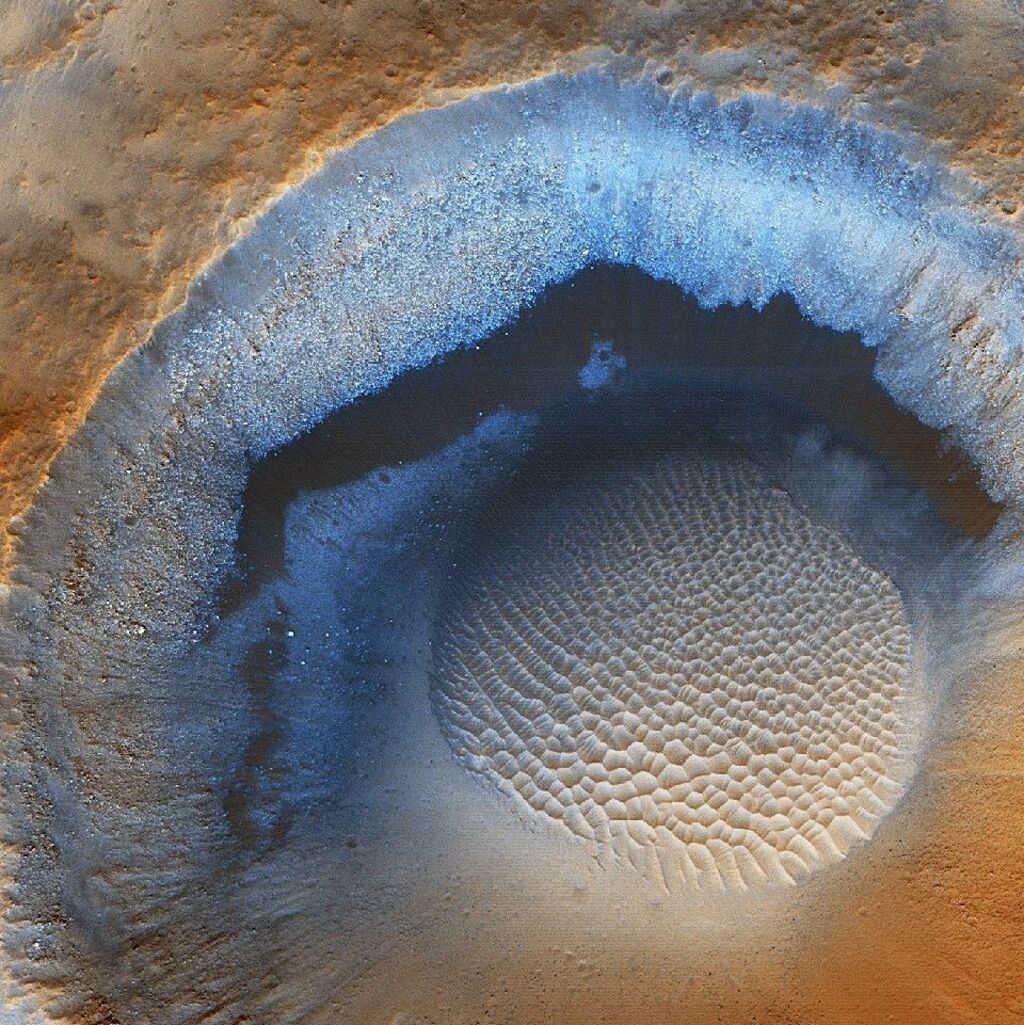
Planetary Processes
That's one beautiful impact crater here. It is probably pretty old. See how the ejecta is gone and the rim smoothed by erosion? But look at the dynamics on the slopes! Blocks tumbling down, a dune field in the center, and sand sheets on the inner margin. This is a color-enhanced HiRISE image of an unnamed crater on Mars. NASA's Mars Reconnaissance Orbiter was approximately 279 kilometers above the surface when this image was taken. The image covers an area of approximately 1 km.
Tuesday, 25 June 2024
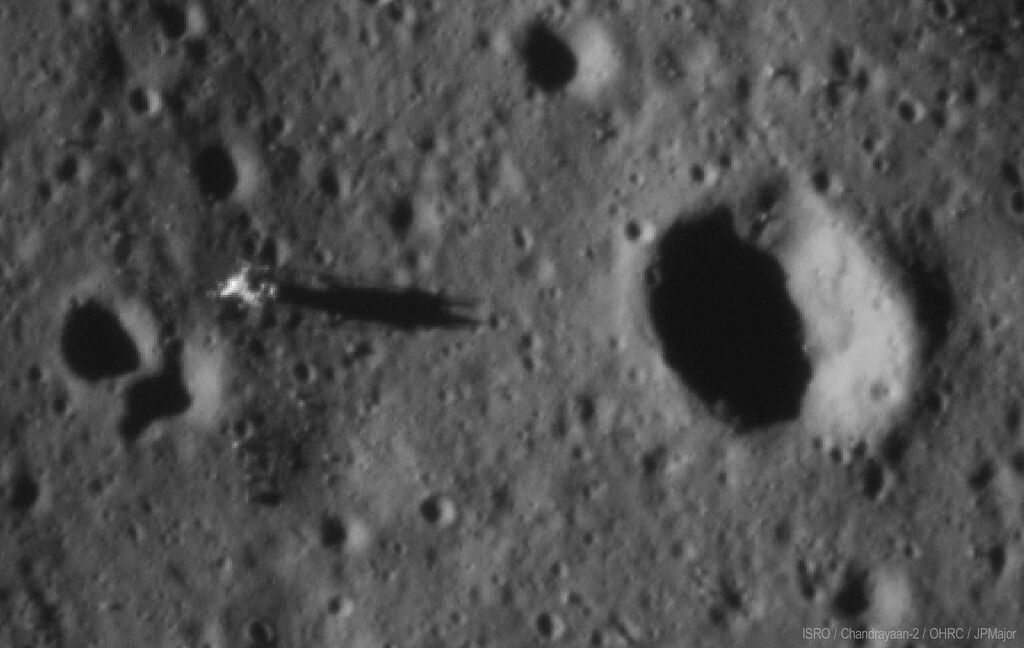
Apollo 11 Landing Site
The Apollo 11 landing site is pictured here with the lunar module descent stage casting a shadow toward Little West crater, as imaged with the Orbiter High-Resolution Camera on India's Chandrayaan-2 from an altitude of 100 km on April 2, 2021.
Wednesday, 26 June 2024
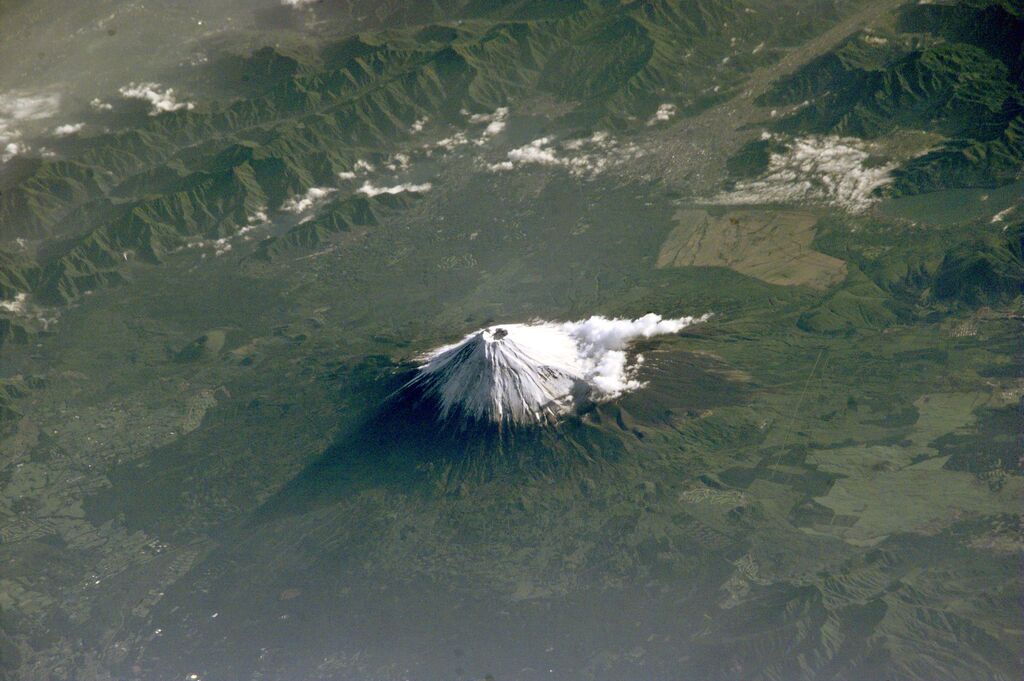
Mount Fuji, Japan
This amazing photo shows Japan’s iconic Mount Fuji from space. The image was captured by an astronaut onboard the International Space Station on 27 May 2001. Mount Fuji, located on Honshu Island, is the highest mountain in Japan at 3,776.24 meters tall. An active stratovolcano that last erupted in 1707–08, Mount Fuji lies about 100 kilometers southwest of Tokyo and can be seen from the city on a clear day. Mount Fuji’s exceptionally symmetrical cone is snow-capped several months a year.
Thursday, 27 June 2024
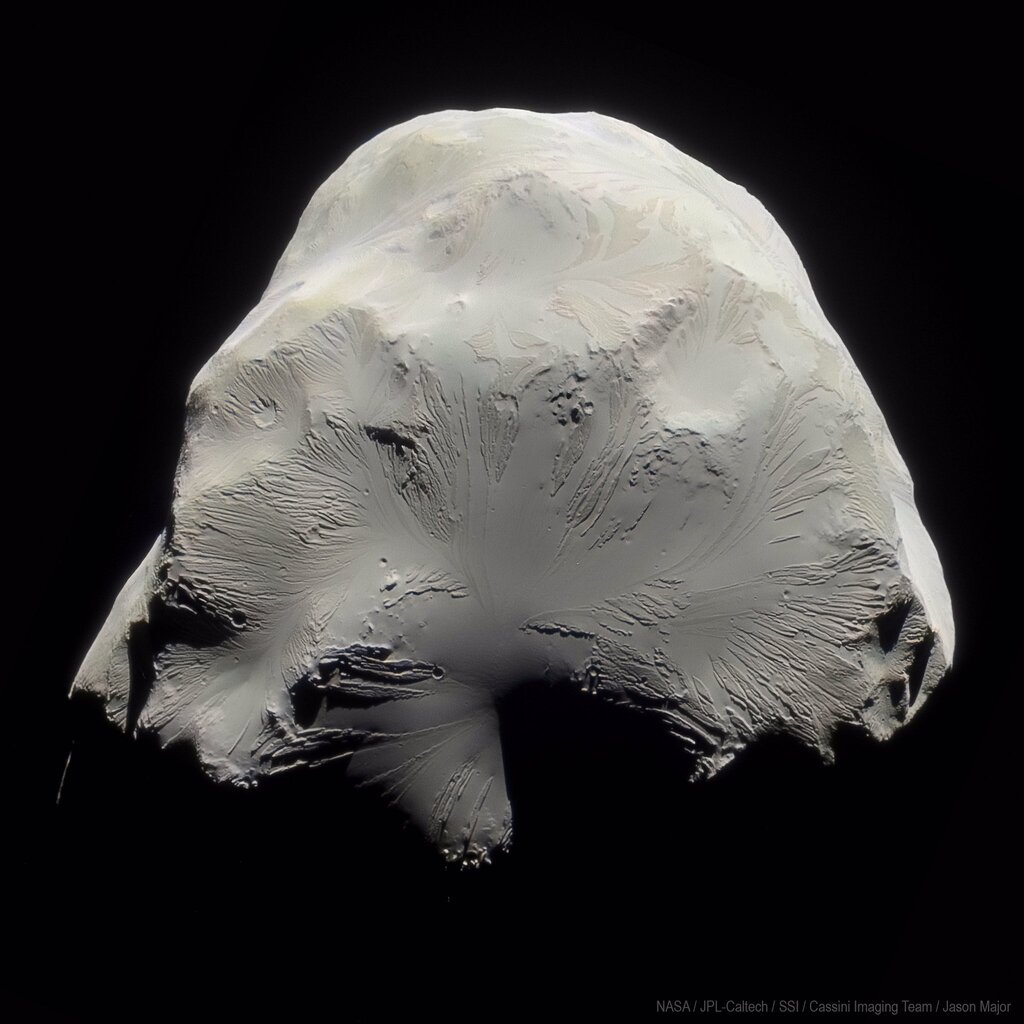
Tiny Saturnian Moon
This image of Saturn's moon Helene is a color-composite made from data acquired by NASA's Cassini spacecraft on June 18, 2011. Helene is only 43.4 kilometers across at its widest. The streaks are downslope flows of icy dust.
Friday, 28 June 2024
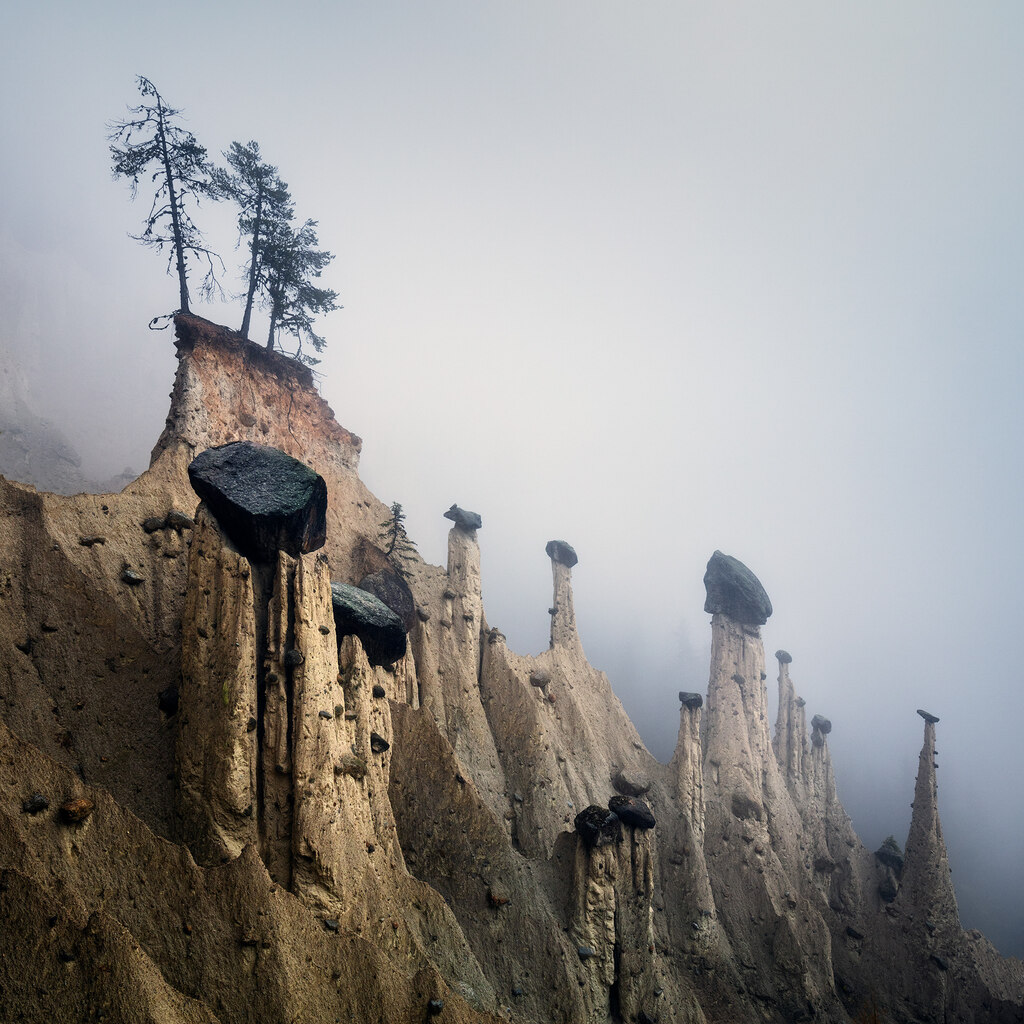
Silent Planet
These otherworldly natural formations are found in South Tyrol, in Italy. shaped by erosion. They remind us of hoodoos in the southwest of the U.S., but their origin is slightly different. Normally the pillars consist of deposited clay with a boulder on top. They “rise” in moraine clay soil left behind by the glaciers of the last Ice Age. The soil is prone to erosion during heavy pour – though it’s hard like stone when dry. Boulders within the glacial soil are like a shield to the soil below them. The surrounding material is swept away by rain but the stone-protected parts stay more or less dry and pillars start to “rise” from the ground. Once the earth pyramid is too fragile to carry the boulder even longer, the balance is lost and the stone tumbles down.
Monday, 01 July 2024
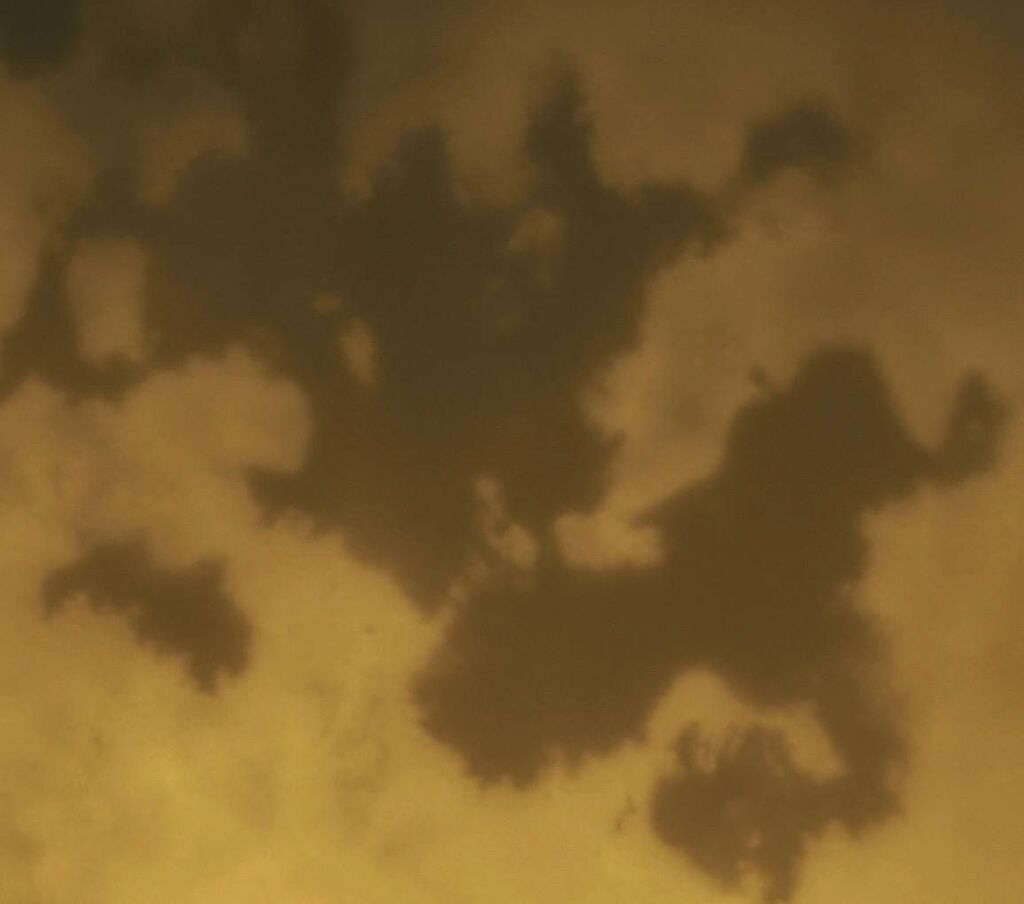
Kraken Mare
Kraken Mare, Titan's largest lake, is over 100 meters deep and may be up to 300 meters deep in places. And it's not water. Like all lakes on Titan, this one is composed of liquid methane and ethane. It covers an area larger than all of the Great Lakes combined and contains 80% of all the liquid on Titan's surface. A narrow (~17 km wide) channel and labyrinth of small islands divides the northern basin of Kraken Mare from the southern; it's called the "Throat of Kraken" and may be home to strong currents and even powerful whirlpools. Taken by NASA Cassini's narrow-angle camera (CB3 filter) on July 10, 2017.
Tuesday, 02 July 2024
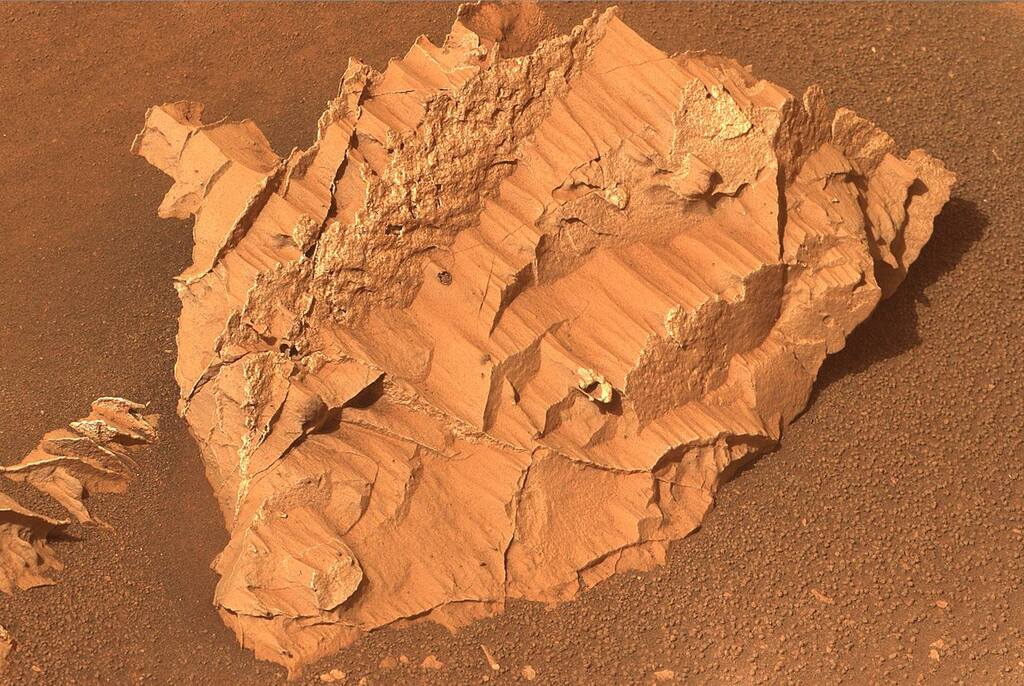
Rock!
NASA's Perseverance rover stumbled into this very cool rock at Jezero crater. Hopefully, the instrument analysis will tell us more soon. Some mineralization and cementation are visible, in what look to be cycles in lake sediment deposition. As for what almost looks like micro-prisms, they could possibly be an ancient network of desiccation cracks. Share your thoughts in the comments!
Wednesday, 03 July 2024
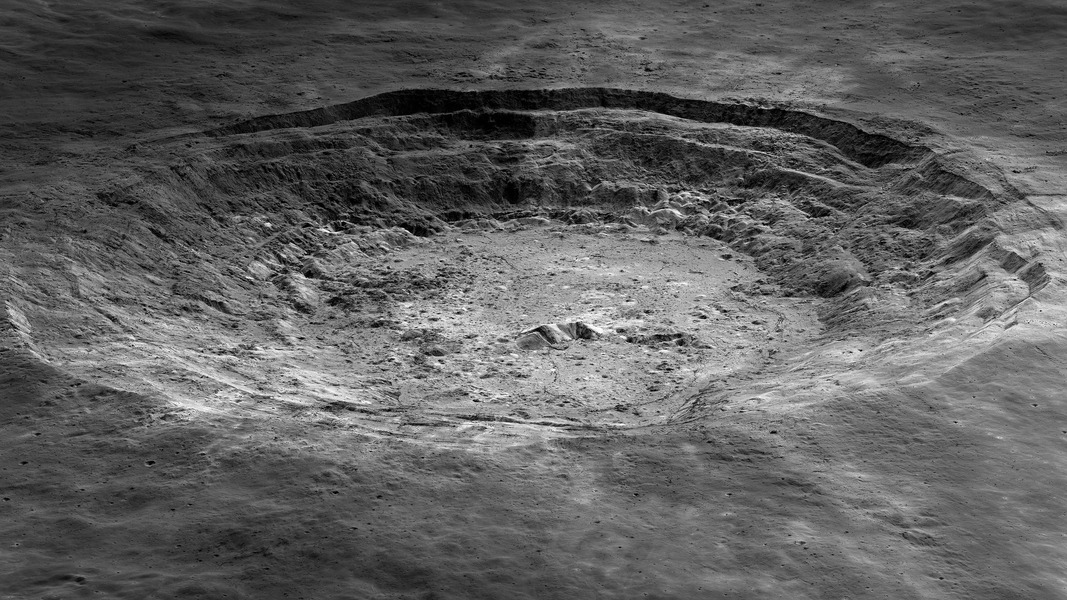
Aristarchus crater on the Moon
Aristarchus lies in the northwest part of the Moon's near side. It is considered the brightest of the large formations on the lunar surface, with an albedo nearly double that of most lunar features. The feature is bright enough to be visible to the unaided eye and displays unusually bright features when viewed through a large telescope. It is also readily identified when most of the lunar surface is illuminated by Earthshine. The crater is deeper than the Grand Canyon. It is 40 km wide and 2.7 km deep! Taken by NASA's Lunar Reconnaissance Orbiter.





